Introduction
Circuit Gallery is pleased to present CMYKRGB, an exhibition of new abstract photographic and installation work by Portland Oregon based artist Akihiko Miyoshi.
In this latest work, Miyoshi pushes his interest in the intersection of art and technology into new territory. While Miyoshi has consistently engaged questions specific to photographic representation – exploiting the conventions of perception, questioning the status of both the photographer/author and the referent/real in the digital age – here he extends his investigation into the very processes and conditions of contemporary image production.
"I believe we live in a moment where the torrent of the digital and the inertia of the analog collide with each other creating an aesthetic and lived experience unique to our time…. This collision is the subject of the works presented."
The works exhibited exist, conceptually, somewhere between painting and photography. Visually, they are between formal abstraction and photographic representation.
Using photography, a medium whose indexicality clings to the real, Miyoshi performs a variety of gestures that bring to the fore the tensions between the analog and the digital. These gestures range from very material and mechanical performative actions undertaken in the studio in front of the camera (using paper, paint, light, mirrors, and the artists own body), to manipulations within the software
(digital gestures such as offsetting the color channel), through to collaborations with the digital algorithms of the software – "letting it think" and act.
Miyoshi seeks to represent something of our contemporary experience of what is pervasive yet elusive, known only through the effects of optics, algorithms, data, and mediation – and experienced through screens and web browsers, 8-bit aesthetics, and virtual worlds.
The works evoke what is intangible or unrepresentable, and yet oddly familiar, by revealing something of the processes underneath the act of representation. Questioning and revealing the spaces between pigment and light, the tensions between the material and immaterial, the real and the virtual, between human and machine, between certainty and uncertainty, Miyoshi’s new work allegorically offers a way to look at the complexity of our present state.
Process Structures
Akihiko Miyoshi
I believe we live in a moment where the torrent of the digital and the inertia of the analog collide with each other creating an aesthetic and lived experience unique to our time. It is my hope that these works look and feel of this moment. This collision is the subject of the works presented. The works create tensions between material and immaterial, real and virtual, analog and digital, pigments and pixels, that can be seen as an allegorical device through which to look at our present state.
These works specifically consider the aesthetics and conditions of production representative/symptomatic of our time where pigments and pixels push and pull at each other. They strive to evoke what is immediately unrepresentable today, only felt in its effects. Specifically, the effects of mechanics such as optics that underlie photography, but also of algorithms, systems, applications, software, and networks refracting data, pigments, and pixels that are ultimately felt through our bodies and rendered into sensation.
Photography is a curious medium to explore something so intangible. It insists on its relationship to the real. This indexicality of the photograph is precisely why I think it is a potent medium with which to explore what is only yet felt, while not literalizing the present. The things that slip out of the concrete and escape indexicality allow us to consider the potential beyond the real. In the works presented, I allow
this potential to fold into formal abstraction and photographic representation. The works here aim to create a felt experience not only of the surfaces and the vehicles of the felt experience unique to our time (such as web browsers, images with 8-bit aesthetics, or visualization of 3D virtual worlds) but also of the processes and structures unfolding underneath.
Some of the works are straight documents (photographs) of setups in the studio using mirrors and tape or performative actions undertaken in the studio. Some are photographs of paint, paint medium, or paper and are manipulated with a simple digital gesture such as offsetting the color channel, while others can be considered a collaboration with the digital algorithms which is no longer a mere simple tool but one that has its own ideas about object ontology (for example, the content aware algorithm).
CMYKRGB
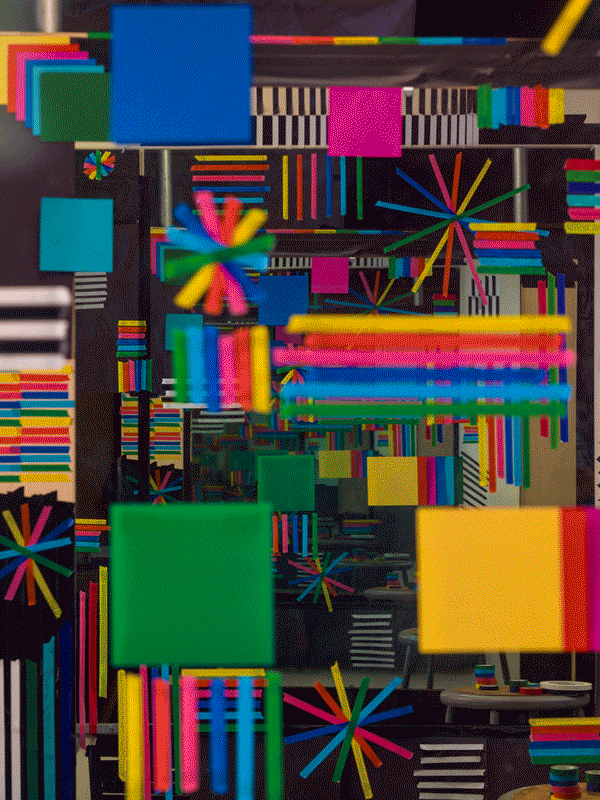
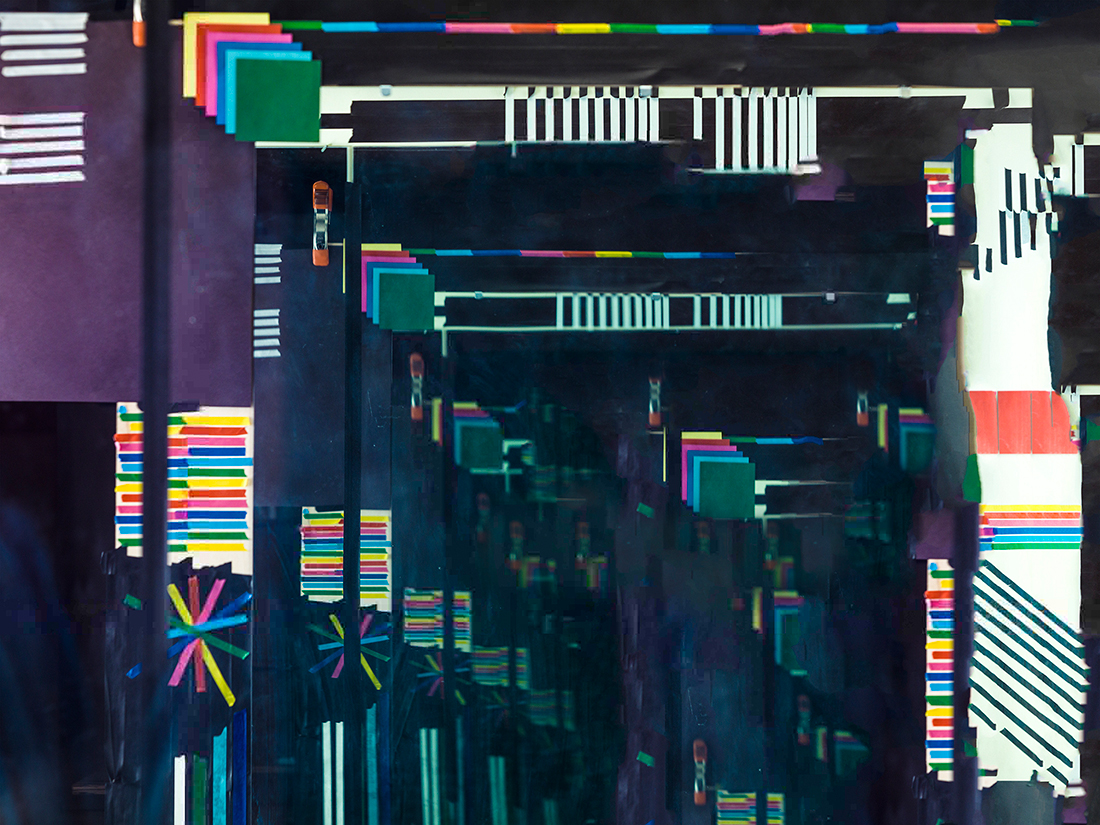
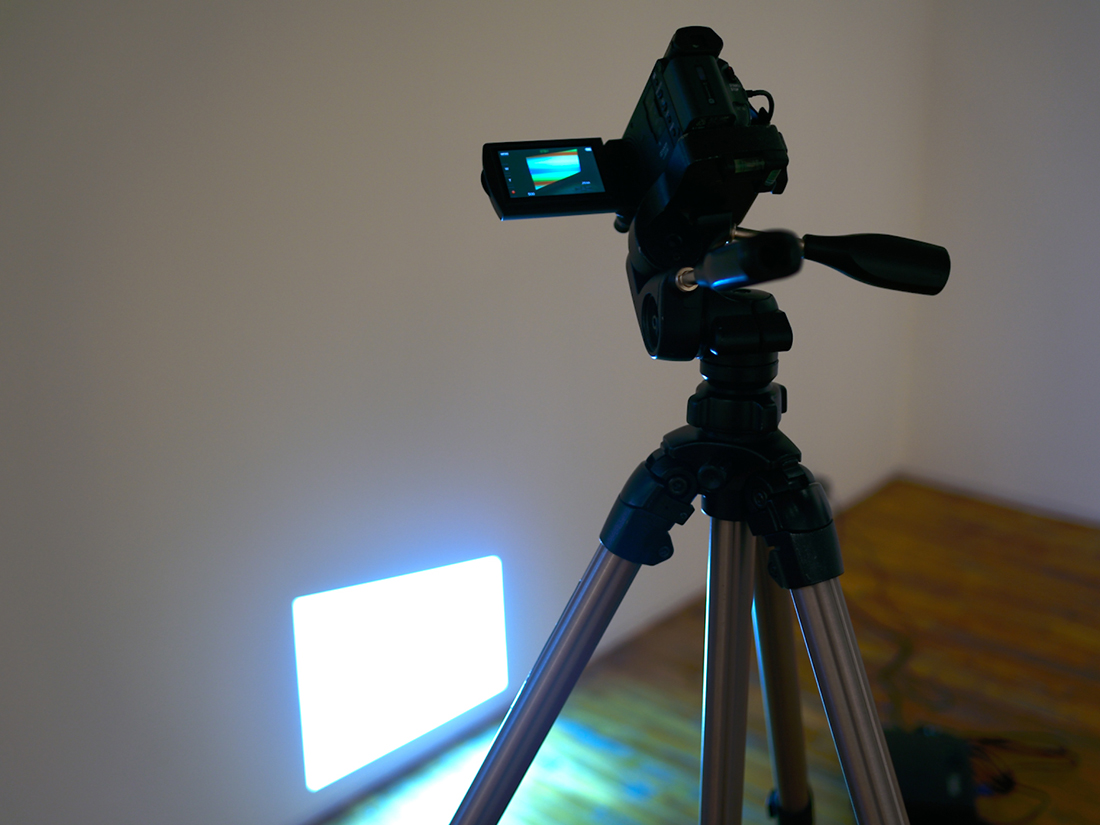
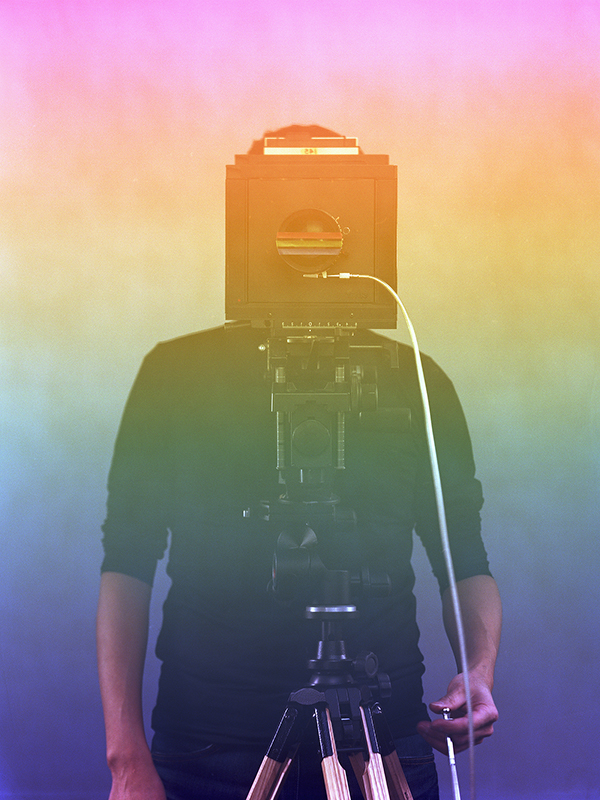
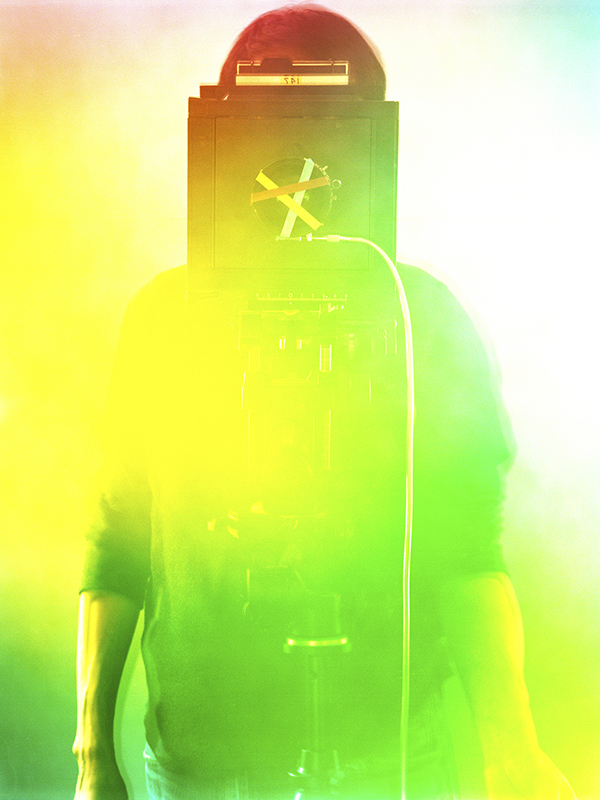
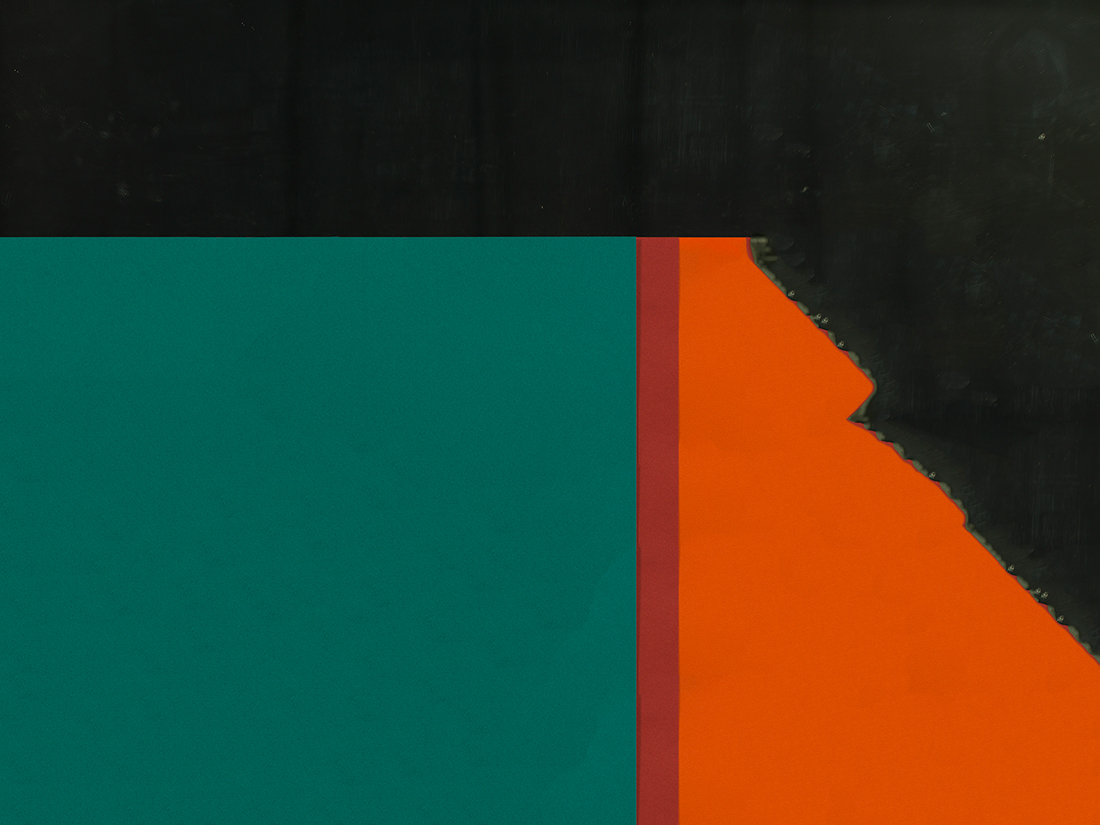
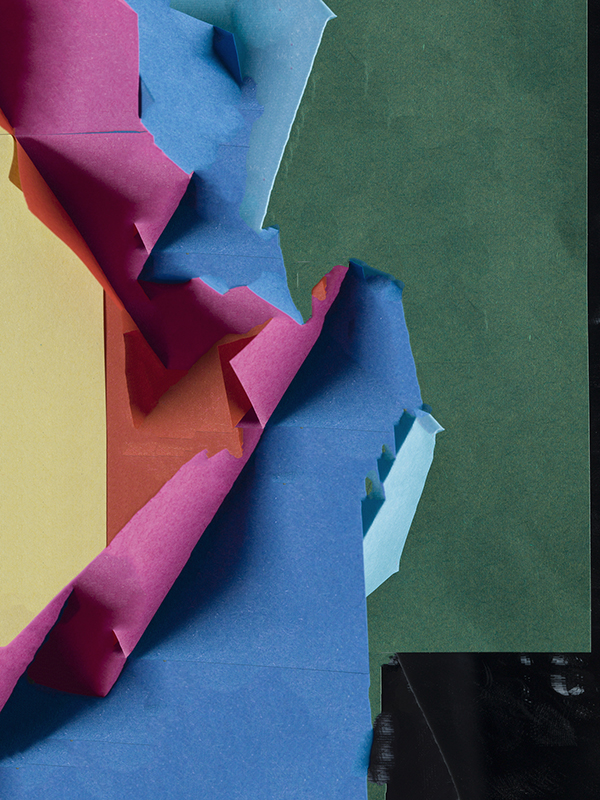
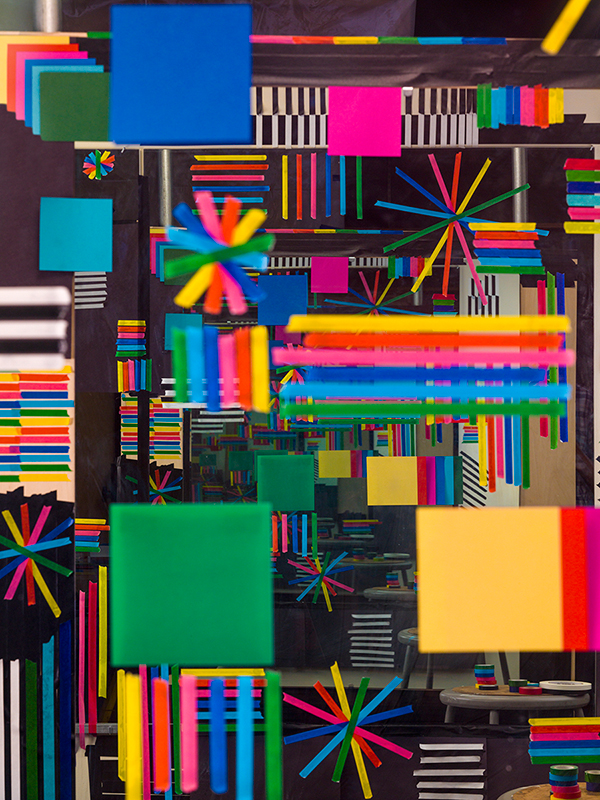
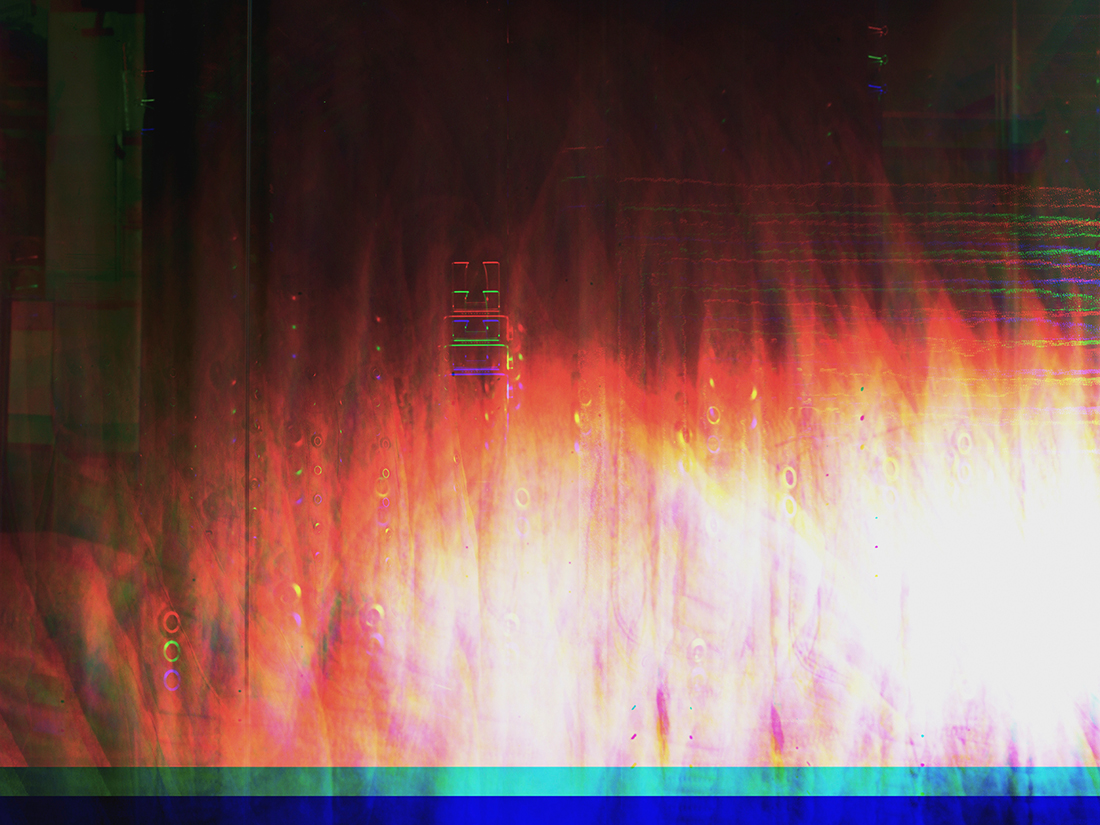
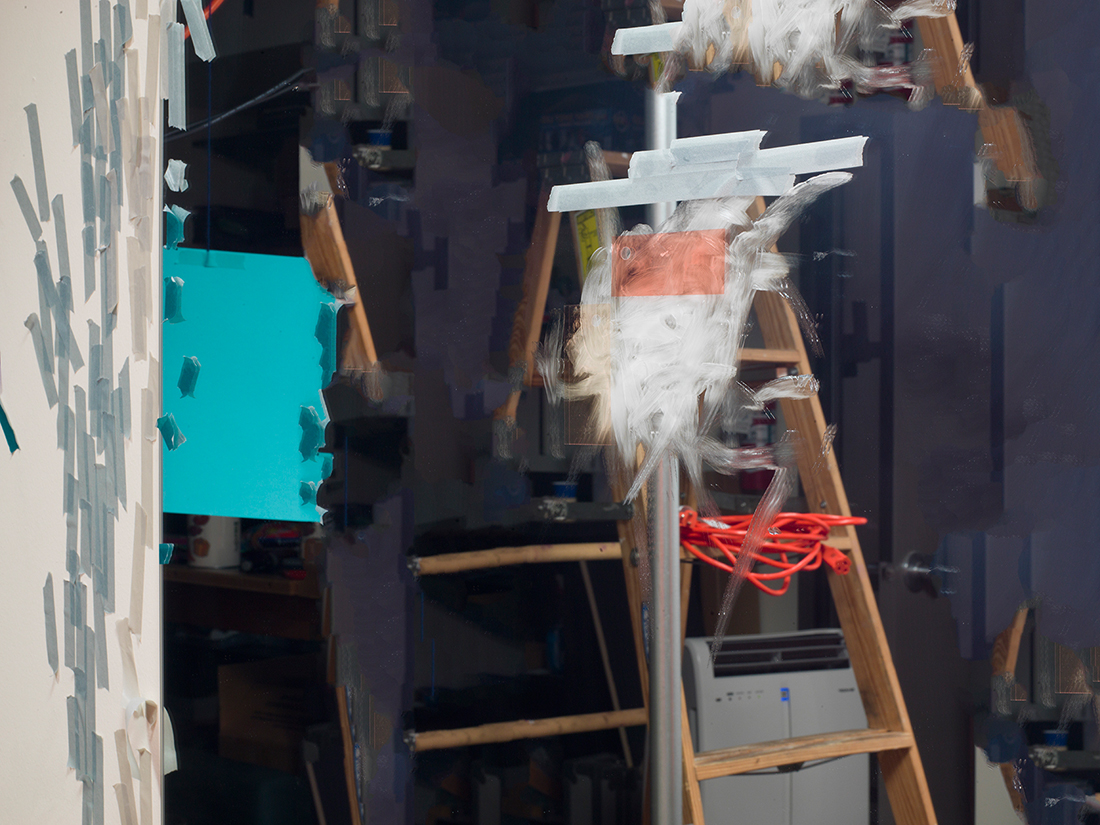
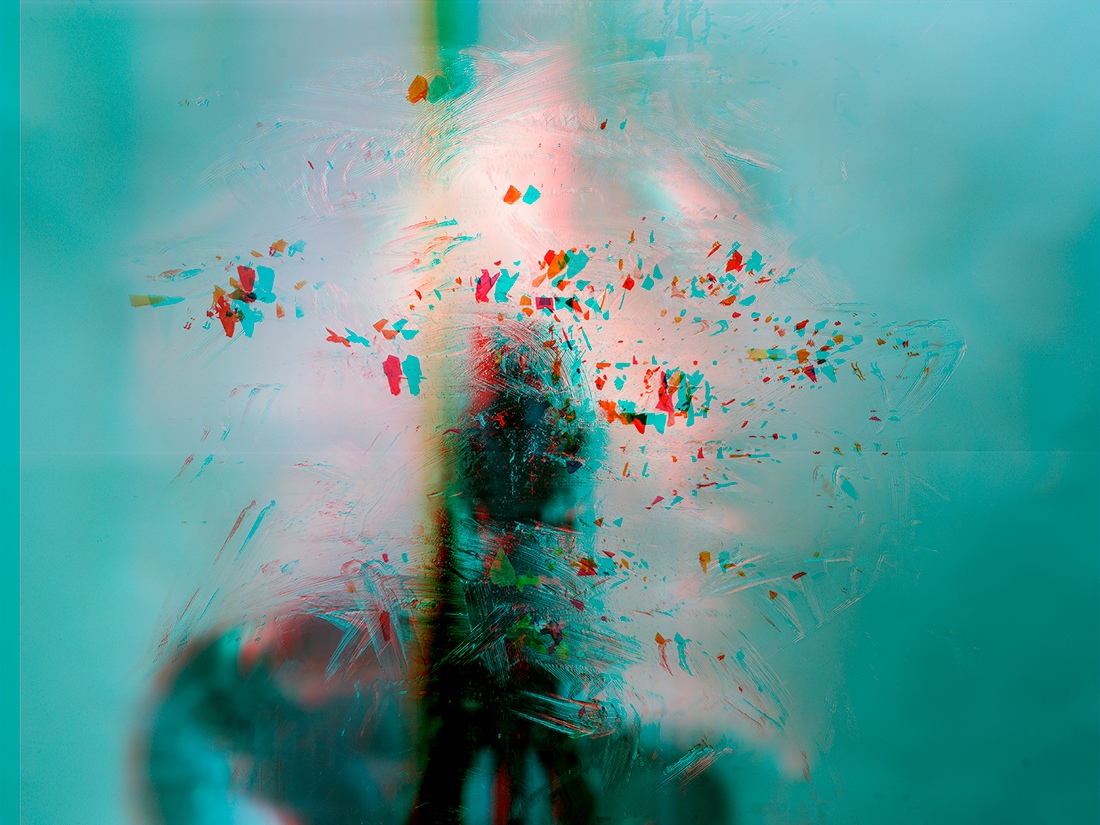
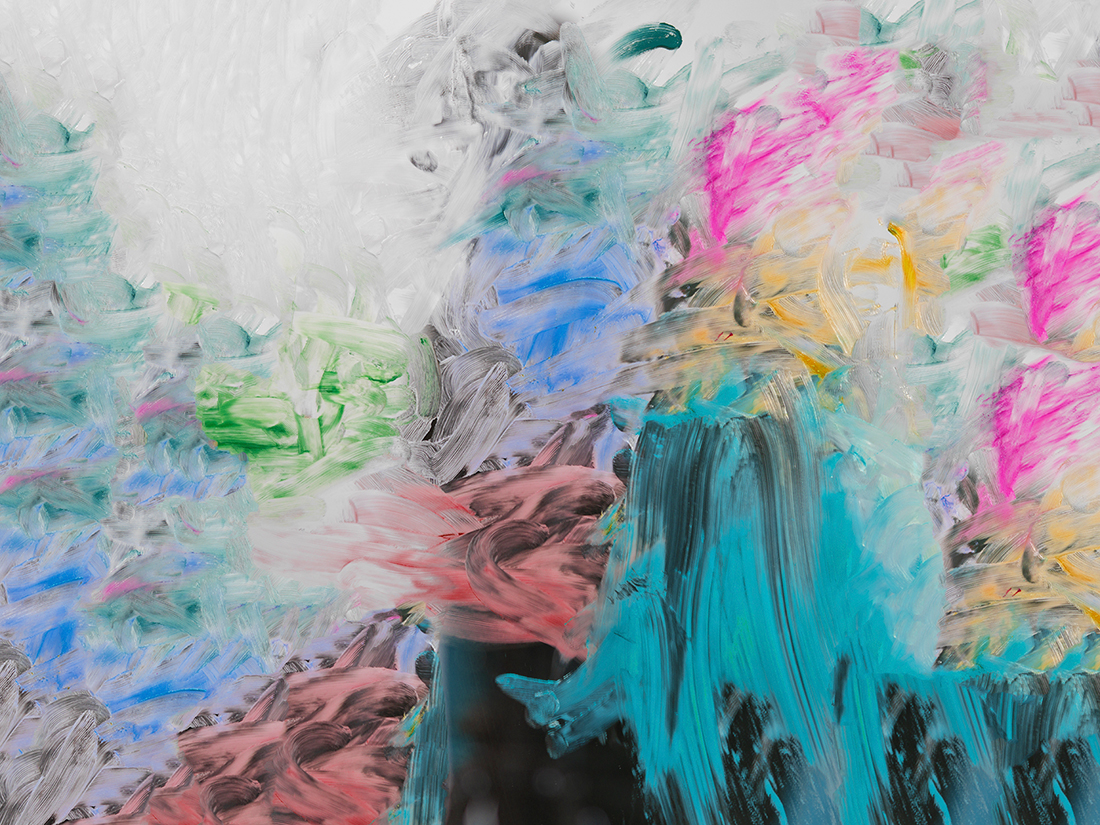
Photography and the ‘Artifacts of Software':Akihiko Miyoshi's CMYKRGB
Emily Doucet
As the American poet Eileen Myles confessed in an essay: "the rupture with reality one feels when writing about art is that there is a tendency to make manifestos out of someone else's play." 1 In an attempt to place words in lines to describe the images in Akihiko Miyoshi's exhibition CMYKRGB, I was presented with a diversity of digital and immaterial formats of work: .jpeg, .gif, URL, and even a 3-D model of the exhibition space to be. While the implication that the digital is in fact immaterial represents a common disavowal of the material, ecological, and human consequences of information technology and digital production, my first encounters with Miyoshi's work were appropriately situated somewhere between my computer and the gallery space.
In an artist statement accompanying the exhibition, Miyoshi charts and maps the point of tension sketched out in the processes of his image-making: "we live in a moment where the torrent of the digital and the inertia of the analog collide with each other creating an aesthetic and lived experience unique to our time." In a similar spirit, the artist and philosopher Hito Steyerl has stated that she sees "images as modes of energy and matter which shape and effect people and monuments." 2 Steyerl argues that we live amongst – and even as – images, and that images have begun to invade reality.
Fundamentally, she suggests that "affect is rendered as an after-effect, reality is post-produced, and we can change it by post-production, we can intervene by means of imaging techniques."3 In a world where both everyday reality and human consciousness are produced by and function in tandem with images and screens, object-subject distinctions become increasingly complex. I mean this not only in the sense of the body's relation to the technological (as in cyborg theory for example) but also the relation of mind and cognition to the proliferation of images in accelerated capitalism. Human interaction with technology hovers between the figures of the cyborg and that of the avatar and Miyoshi's images map this journey of representation. However, digital labour (here, photographic manipulation) is emphatically still labour and the question remains of how and where the body is to be seen or felt. Current emphasis on materiality and production is therefore bound up in our political moment and the role of images in the definition of possible pasts and futures.
Miyoshi has described several of the works in his exhibition as a "collaboration with the digital algorithms which [are] no longer a mere simple tool but one that has its own ideas about object ontology."4 He points to the "content-aware" tool in Adobe® Photoshop™ software which, when applied, selects, outlines and removes what it determines to be objects and/or subjects in the background or foreground of the
image. Imagining photography as the transmission of information (pixels) as opposed to the interaction of light and chemicals on the material surface of the photographic print, Miyoshi highlights the evident tensions between these various embodiments of the medium. Playing with the prescribed and static algorithms of standard photo-editing programs, Miyoshi explores the established and pixel-oriented definition of subjects and objects within digital image worlds. Treading a well-worn path of investigation into the relationship between subjectivity and automation, Miyoshi's images are situated almost between mediums, borrowing from the visual languages of photography, painting, collage, and sculpture.
Miyoshi differentiates between his earlier "abstract" photographs and his later "process," images; the former highlights the framing apparatus of the camera's lens, while the latter explores the creative potential of the prescribed algorithms of photo-editing software. The content aware algorithm excavates objects, based on significant differentiation between hex number (colour) of pixels. Thus form is defined by colour, establishing a surprisingly formal, and even modernist basis for what at first glance appears to be digitally informed.
In e-mail correspondence, Miyoshi refers to the content-aware function in Photoshop as an "artifact of software," singling out the complex conception of materiality at play in this series of images. An artifact signals something of human creation, usually of historical or cultural interest. Uncertain objects emerge within the frame of Miyoshi's images. Painterly and even sculptural in form, the Process Structure series appears to be furthering of many of the concerns of the Abstract Photographs series. What was made explicit through imaging the body in dialogue with the camera has now left both body
and apparatus outside the frame, imaging instead the abstractions of colour and code, mirror and paper.
Through Miyoshi's manipulation of the photographic, colour is understood as an object, or at least as something with its own temporal form. As objects and subjects are determined by differences in pixel colour, Miyoshi's use of coloured paper in Process Structure #6 and Process Structure #7, contrasts the very real material qualities of paper against the immaterial, or at the very least uncertain materiality of the shapes determined by the pixel analysis performed by the software. Uncertain object-ness thus floats to the top of Miyoshi's words and images. Somewhere between the body of the artist, the physical weight of the camera and the embodiment of colour transposed into form, the images remain transient.
The projection piece, The Distance Between included in the exhibition, speaks to just this tension between body, apparatus and image; the viewer creates the image only through the physical act of looking in concert with the lens of the camera. Moving past the overt relationship between the body and the apparatus, which is defined in the Abstract Photographs series, Miyoshi's later work, shown here together, celebrates rather than questions the occultism and esotericism of computer programming. Invoking the mysticism ingrained in the audience's understanding of the processes at play behind his images, one is left considering where this thinking could lead Miyoshi next, ensuring artistic production does not water-down the artist's knowledge of computer science, through the translation of the exploration of these themes in the language of visual art. How does one generate substantial and epistemological claims through the language of photography?
Miyoshi's own disciplinary redefinition, leaving a PhD program in Electrical and Computer Engineering to pursue an MFA in photography, seems key here, outlining a search for and exploration of a variety of languages with which to define… something. A diagram acts as an artist statement, outlining the visual complexity and multi-directionality of terms and reference points Miyoshi oscillates between and amongst. How – can – I – make – myself – write – a – functional – program – without – myself? We can read multiple sentences or narratives across Miyoshi's diagram, a network that obscures as much as it communicates.
At the bottom of the diagram, the words "digital image" and "imagination" sit across from each other, connected only through the central question mark, an apt mapping of the tension embodied in Miyoshi's line of questioning. Most intriguing of these allusions perhaps is the animation of the supposed indexicality of the medium of photography in concert with the language of computer programming and algorithms, which define our interactions with digital images. As Miyoshi himself has suggested: how can we use these languages as allegorical devices with which to define the complexity of our present state?
NOTES
1. Eileen Myles, The Importance of Being Iceland: Travel Essays in Art (Los Angeles: Semiotext(e), 2009), 111.
2. "The Photographic Universe: Photography and Political Agency?", online lecture recorded at the New School, New York on April 24, 2013. http://www.youtube.com/watch?v=kqQ3UTWSmUc. Accessed: November 30, 2014.
3. Ibid.
4. Miyoshi, "Artist Statement."
BIOS
Akihiko Miyoshi
Born in Japan, Akihiko Miyoshi received his MFA in photography in 2005 from the Rochester Institute of Technology after leaving a PhD program in Electrical and Computer Engineering at Carnegie Mellon University to pursue art. Miyoshi is an Associate Professor of Photography and Digital Media at Reed College (Portland, OR). His work explores the intersection between art and technology most frequently dealing with issues surrounding photographic representation.
His work has been exhibited widely including Portland, New York, Los Angeles, Rochester, Pittsburgh, and Toronto. He was named the International Award Winner of Fellowship 12 at The Silver Eye Center for Photography in Pittsburgh PA, and the finalist for the Betty Bowen Award from the Seattle Art Museum in 2012 and Aperture Portfolio Prize in 2013. Miyoshi received a Hallie Ford Fellowship in 2012.
BIOS
Emily Doucet
Emily Doucet is a writer and researcher based in Toronto, Canada. Currently working on her PhD in the History of Art at University of Toronto, she holds an MA in the History of Art from University College London. Her current research explores the boundaries between artistic practice and scientific research, with a focus on speculative fictions and photography in nineteenth century France.
Circuit Gallery
Circuit Gallery specializes in contemporary photography. Established in 2008 by Susana Reisman and Claire Sykes, the Toronto based commercial gallery represents both emerging and established Canadian and international artists.
Akihiko Miyoshi
CMYKRGB
April 9 - May 2, 2015
Circuit Gallery @ Prefix ICA
401 Richmond Street West, Suite 124
Toronto, ON, M6R 2G5
Curated by Claire Sykes, with Susana Reisman, Circuit Gallery
Catalogue essay: Emily Doucet
Installation Photography: Susana Reisman
Publication Design + Programming: Lucas Mulder
© 2015, Circuit Gallery
All rights reserved. No part of this publication may be reproduced or
copied without permission in writing from Circuit Gallery.